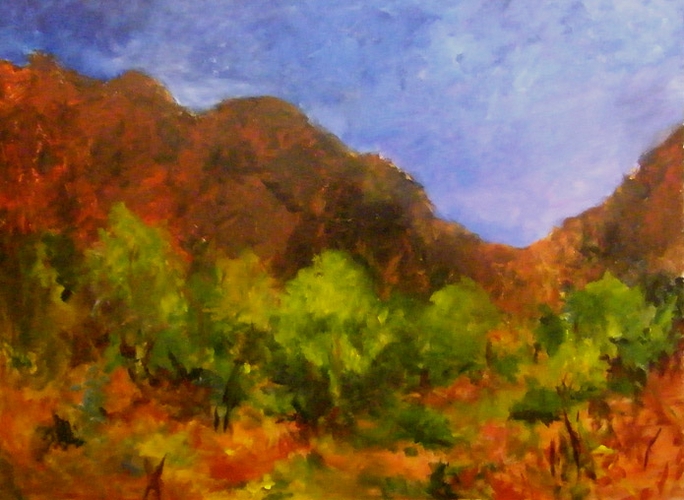
When it comes to smooth transitions in paintings, the most natural and intuitive way to suggest this is by blending. It’s easy to do with oil paint, but because of the fast-drying nature of acrylics, blending has been incredibly challenging with acrylics. Happily, blending is easy with Atelier Interactive, because it is the only acrylic that can be controlled to delay drying so you can blend, simply by using a water sprayer or by using the Unlocking Formula.
When it comes to blending with Interactive, there are a generally 3 circumstances you will encounter: during a session, you are busy painting and want to delay drying of tacky paint so you can blend in wet paint; during a session, you want to blend, but a section of your painting is now touch-dry, so wet paint is overpainting instead of blending; or it’s a few hours (or days) later, and the entire painting is touch-dry. What do you do?
You start by using Chroma’s Fine Mist Sprayer. This atomizer delivers a mist that you spray onto your Interactive painting. Interactive will absorb this moisture and become workable again. It’s good to use Chroma’s Fine Mist Sprayer because it delivers a very fine spray, instead of huge water droplets, and is easier to control.
So in the 1st circumstance, you are painting and blending, but you feel the paint becoming tacky and your brush beginning to drag. That’s Interactive interacting with you (and how the paint got it’s name). The paint is telling you that if you want to keep blending and working wet-in-wet, then you need to replace evaporated moisture and spray using water in your Fine Mist Sprayer. You need to spray just enough until Interactive absorbs the moisture and your fingers glide on the surface. Just touch your painting – you’ll see the wet paint on your finger!
In the 2nd circumstance, you’ve been painting, and you want to blend into another section, but that section is now touch-dry. No worries – you can still use your water sprayer! I find I can typically rehydrate touch-dry paint with water so I can blend, for up to 3 hours or so, depending on my surface, the humidity in the environment, how thickly I painted, and if I incorporated any Slow Mediums. Naturally, using Interactive on a well-sealed surface in a painterly, impasto manner gives you more working time with water alone, than if you were painting very thin layers on an absorbent surface.
The 3rd circumstance is when it’s a few hours or days later and you want to blend. You Interactive painting is still touch-dry, but has begun to cure. At this point, you’ll want to fill your Fine Mist Sprayer with Unlocking Formula. Spray that section of your painting with Unlocking Formula as before – just enough until you fingers glide on the surface and the paint is workable again. Now you can feather edges, adjust values or incorporate fresh paint into dry layers. It’s pretty amazing! Interactive generally cures in about 10-12 days in the American Northeast (where I live), but curing time adds or decreases by a few days depending on the surface, the humidity in the environment, how thickly you painted, and if you incorporated any Fast or Slow Mediums
Remember, blending is an option you choose to explore – you don’t have to if you don’t want to! If you just want to overpaint using traditional acrylic techniques, simply withhold the water spray and let your Interactive paintings set up. You can also choose to incorporate some of the fast-drying mediums, like Binder, Fast Medium/Fixer, Impasto Gel or Modelling Compound. On the flip side, you can add to the time Interactive stays workable with water by incorporating slow-drying mediums, like Slow, Thick Slow or Clear Painting Medium.
Sometimes it’s easier to watch these techniques in action, and you can view a video below that shows these techniques. But probably the best way to learn is to try it for yourself! If you have any comments or tips to share, please post them below!
